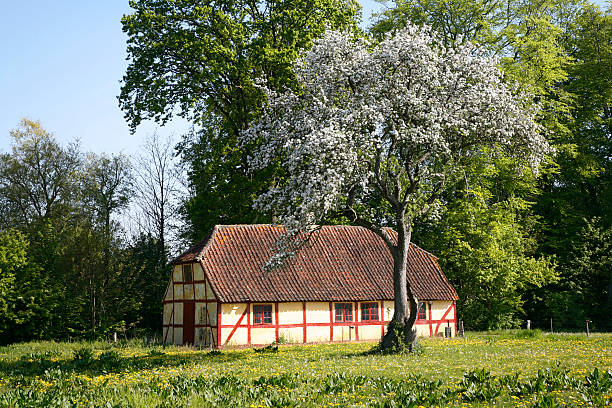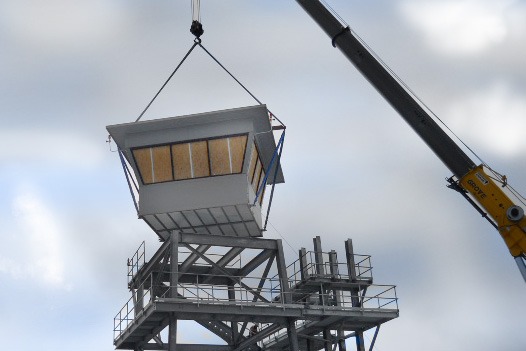How Similar are Modular Construction and Legos?
As modular construction has grown in popularity over the past few decades, it has garnered more and more comparisons to the toy giant LEGO. Similar to LEGO bricks, modular construction modules are manufactured and designed (typically) in a rectangular, box shape and to be snapped into place quickly and easily. Many construction media outlets have used this comparison (featuring Panel Built) to explain how modular construction differs from traditional. However, exactly how similar are these two? Today, we will go through a lot of background, techniques, and applications of both to see just how close they are.
Where Did They Come From?
Lego as a company started as a carpentry shop in Denmark by woodworker Ole Kirk Christiansen in the late 19th century. The company grew until the depression era in the early 1930s, where Christiansen had to adapt to smaller projects to get by. Eventually, Christiansen began to craft wooden pull-toys like ducks and firetrucks for children. Even though the Great Depression made times tough, Christiansen and his shop made it through the downturn and began to focus on more on his toy business. Around this time, the company took its now world-famous name, “Lego,” a contraction of the Dutch “leg godt,” meaning “play well.”
Moving into the 1940’s, a fire burns the wooden toy factory to the ground. Christiansen completely rebuilds the facility, but not before considering giving up the toy business for good. However, shortly after this fire. Christiansen and Lego made a decision that sparked the creation of the most popular toy of the century; they bought a plastic mold… While it might not sound very exciting, this leads to the birth of their… “Automatic Binding Brick” in 1949.
Modular construction, on the other hand, was derived out of necessity. One of the first instances of a modular building being erected came in 1839 in Australia. The “Society of Friends” or Quakers in North Adelaide, Australia were shipped 69 packages of building parts. The parts, when assembled, would form them a Meeting House for them to hold worship. However, each part of this building had to make a journey of over 8,000 nautical miles because this building was actually made in the UK.

Henry Manning, a London carpenter, had designed a building, or cottage at was comprised of components that could be shipped and assembled elsewhere. These buildings were a godsend to new British settlers overseas because they allow for the quick assembly of new buildings with relative high-quality materials and design. However, Manning’s prefabricated buildings are the first prefab building that can be found ADVERTISED commercially. The first prefab buildings to have existed look to be made in the early 17th or 18th century, over 300 years before the first Lego brick!
Why Are They Successful?
Since their inception, Lego bricks have provided an outlet for children (and sometimes adults) to create objects or structures that were only limited by their own imagination. Initially, Lego came out with standard town landscape that would be filled with police stations, fire departments, town halls, etc., as well as the vehicles each place would have. Different iterations of these sets were produced in the early years of LEGO bricks. However, eventually, Lego’s competition started to change. LEGO no longer was up against GI Joes and other action figures because starting in the 90’s video games starting taking up more and more of kids’ play time. But Lego adapted.
While a number of different product integrations (including Lego robotics, video games, tv shows, and movies), Lego eventually landed on the solution that fit perfectly in their niche, licensing deals! Alright, it might not sound as exciting as it is, but through licensing deals, Lego was (and still is) able to reinvigorate the imagination of kids by using elements of what they see in movies and television and allowing them to make them their way.
Everyone knows the heavy hitter in this space is Lego Star Wars, but Lego has created sets including Harry Potter, Marvel Comics, DC Comics, Indiana Jones, Jurassic Park and the Lord of the Rings to name a few. Not only can kids build their own AT-ST, but they can have a giant Lego T-Rex come in and destroy it or have them combine to an AT-ST-Rex. Doesn’t matter. You can do it, and it’s endless entertainment.

As for modular construction, there are not quite as many dinosaurs or spaceships, but the idea of only being limited by your imagination is still largely the same. Using a panelized system such as our own, a modular building can be crafted in any way you see fit and is not limited to the shape of a rectangle. Just like Lego, these structures are put together piece by piece and can be readapted, altered, and moved as you see fit. Not to mention, since the product is prefabricated in a factory, they are put together (nearly) as fast as your Lego bricks as well, meaning your facility can have a new breakroom/ game room/micro-café/dojo/salad bar combo in no time flat.
How do They Work? (Enter “The System”)
If you have seen the Lego episode of Netflix’s “The Toys that Made Us,” you are most likely well aware of Lego System, and the vast role it played in the development of Lego sets for decades. Lego’s system or “The System” as many Lego employees call it, is a precise system of measurements: height, length, and width, that all Lego bricks are based on. With all Lego pieces following the system, different sets and brick types would fit together in one configuration or another.
With The System in place, kids and parents can haphazardly dump all of their different Lego bricks into a giant 20-gallon tub and sleep easy at night knowing when they play with them again, they will all fit together perfectly.
Similarly, panelized modular offices have a system that allows for the building panels to snap into place with one another effortlessly. Since “The System” was taken, the Panel Built modular building system is our very own binder post system! Essentially, the binder posts act as a way to attach one panel to another every 4 feet, in any direction needed. The posts themselves are made from aluminum and come with a piece of snap cover to house any and all electrical components. With the binder posts, top channel, and base channel, the wall panels are fully encased, providing a rigid frame.
